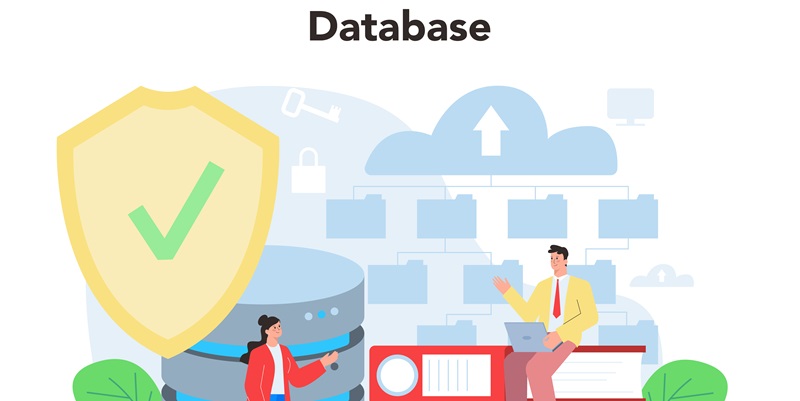Document databases, also known as document stores, are a type of NoSQL database that offer excellent support for content management applications such as blogs and video platforms. Unlike traditional relational databases, document databases store data in a flexible, semi-structured format, making them ideal for handling unstructured and evolving data. This article will explore the various use cases of document databases and delve into their key features and limitations.
Use cases of document databases
Content management applications, such as blogs and video platforms, greatly benefit from the capabilities of document databases. These applications often deal with large volumes of data, including multimedia content and user-generated information. With their flexibility and ability to handle semi-structured data, document databases provide an efficient and scalable solution for storing and managing this content.
In addition to content management, document databases excel at storing catalog information. Whether it’s an e-commerce platform with thousands of products or a digital library with extensive metadata, document databases offer a robust structure for organizing and querying catalog data. The flexibility of document databases allows for easy updates and additions to the catalog without the need for rigorous schema modifications.
Key Usage in Document Databases
In document databases, the key plays a crucial role as a simple identifier (ID) for each document. The key can take various forms, such as a string, a path, or a URI, depending on the specific database implementation. The key uniquely identifies each document and enables efficient retrieval and manipulation of data. This simple identifier greatly aids in organizing and accessing documents within the database.
Retrieving Documents in Document Databases
One of the key strengths of document databases is their ability to retrieve documents based on their content. Unlike relational databases, which primarily rely on structured queries, document databases allow developers to perform flexible searches using the data contained within the documents themselves. This feature enables efficient and responsive retrieval of relevant information, enhancing the overall performance of applications that rely on document databases.
The relationship between document databases and NoSQL is that document databases are a type of NoSQL database
Document databases fall under the umbrella of NoSQL databases, which are non-relational databases designed to handle vast amounts of data efficiently. Within the realm of document databases, there is a subclass known as XML databases, specifically optimized for XML documents. These databases provide additional functionality and performance when working with XML-based data structures.
Development Focus with Document Databases
Document databases are primarily designed for developers who want to stay focused on developing applications rather than managing complex data structures. The flexible nature of document databases allows developers to easily iterate and evolve their data models without extensive schema changes. This flexibility is particularly valuable in agile development environments, where requirements and data structures may change frequently.
JSON and Its Role in Document Databases
Document databases commonly use JSON (JavaScript Object Notation) as the format for storing and exchanging data. JSON is a lightweight, text-based data interchange format widely adopted on the internet. Its simplicity and human-readable syntax make it an ideal choice for representing complex data structures within document databases. JSON’s compatibility with popular programming languages and web technologies further enhances its role in document databases.
Horizontal scaling in document databases
To accommodate growing data storage needs, document databases employ horizontal scaling, the practice of adding more servers to distribute the load and increase storage capacity. This approach is generally faster and less expensive than vertical scaling, which involves upgrading individual servers with more powerful hardware. Horizontal scaling ensures that the database remains performant even as data volumes grow, making it a scalable and cost-effective solution.
Flexibility of Document Stores
Document stores offer exceptional flexibility when handling semi-structured and unstructured data. Unlike relational databases that require strict adherence to predefined schemas, document databases allow for the storage of data with varying structures within the same collection. This flexibility lends itself well to applications dealing with dynamic or evolving data as it enables seamless updates and additions without the need to modify existing data models.
Limitations of Document Databases
While document databases have numerous advantages, they also have certain limitations that developers should consider. One notable limitation is their suboptimal performance when running complex search queries. Document databases are optimized for retrieving documents by their content, but they may struggle with more advanced querying scenarios. Additionally, document databases may not be the best choice for applications requiring complex multiple operation transactions, as they lack some of the transactional capabilities provided by relational databases.
In conclusion, document databases offer developers a powerful and flexible solution for managing content and handling semi-structured data. Their ability to efficiently store and retrieve documents based on content, coupled with their scalability and ease of development, makes them an attractive choice for various applications. However, developers should carefully evaluate the specific requirements of their application, considering search query complexity and transactional needs, before deciding to leverage document databases. By understanding the strengths and limitations of document databases, developers can make informed decisions when architecting their applications and ensure an optimal balance between performance, flexibility, and usability.

